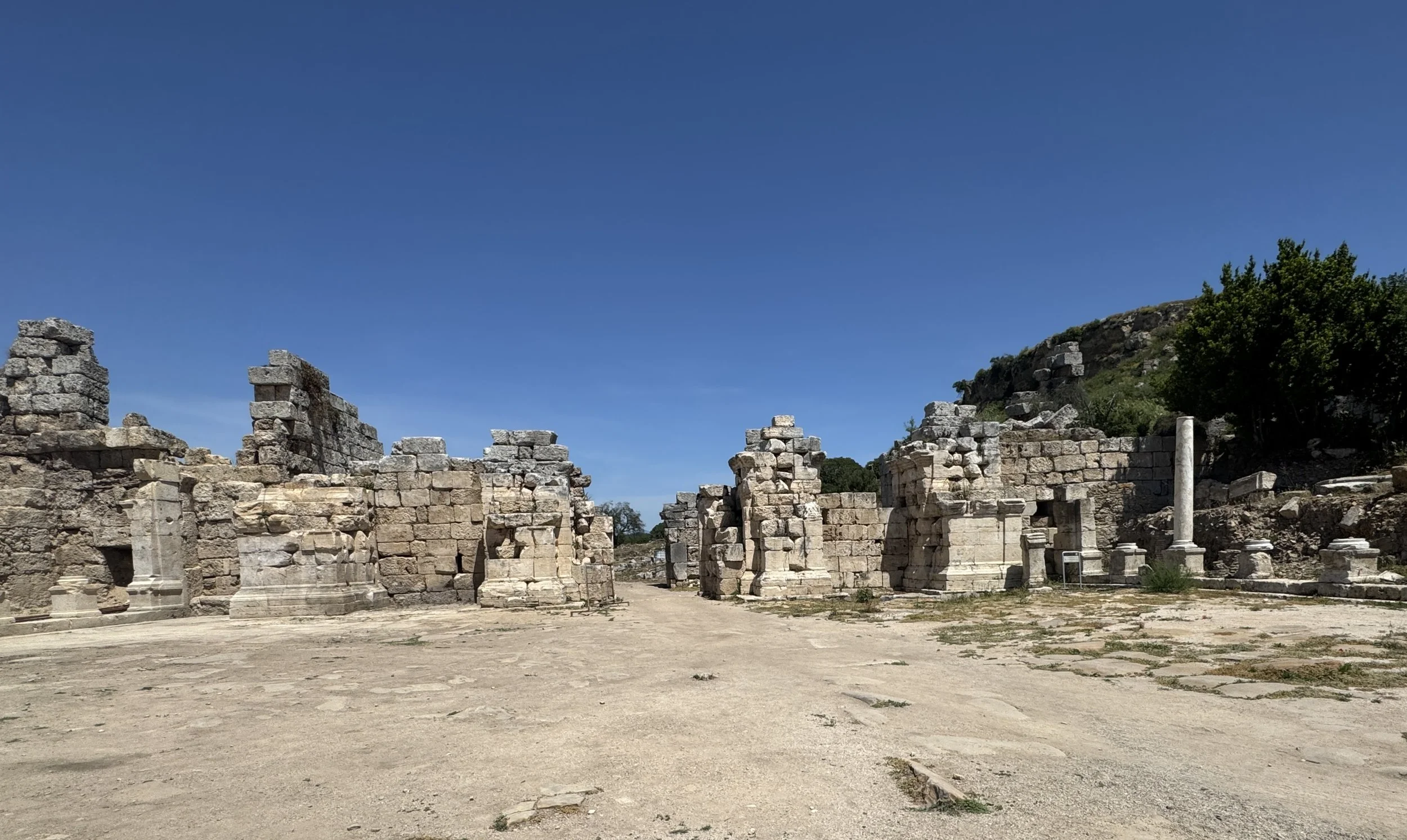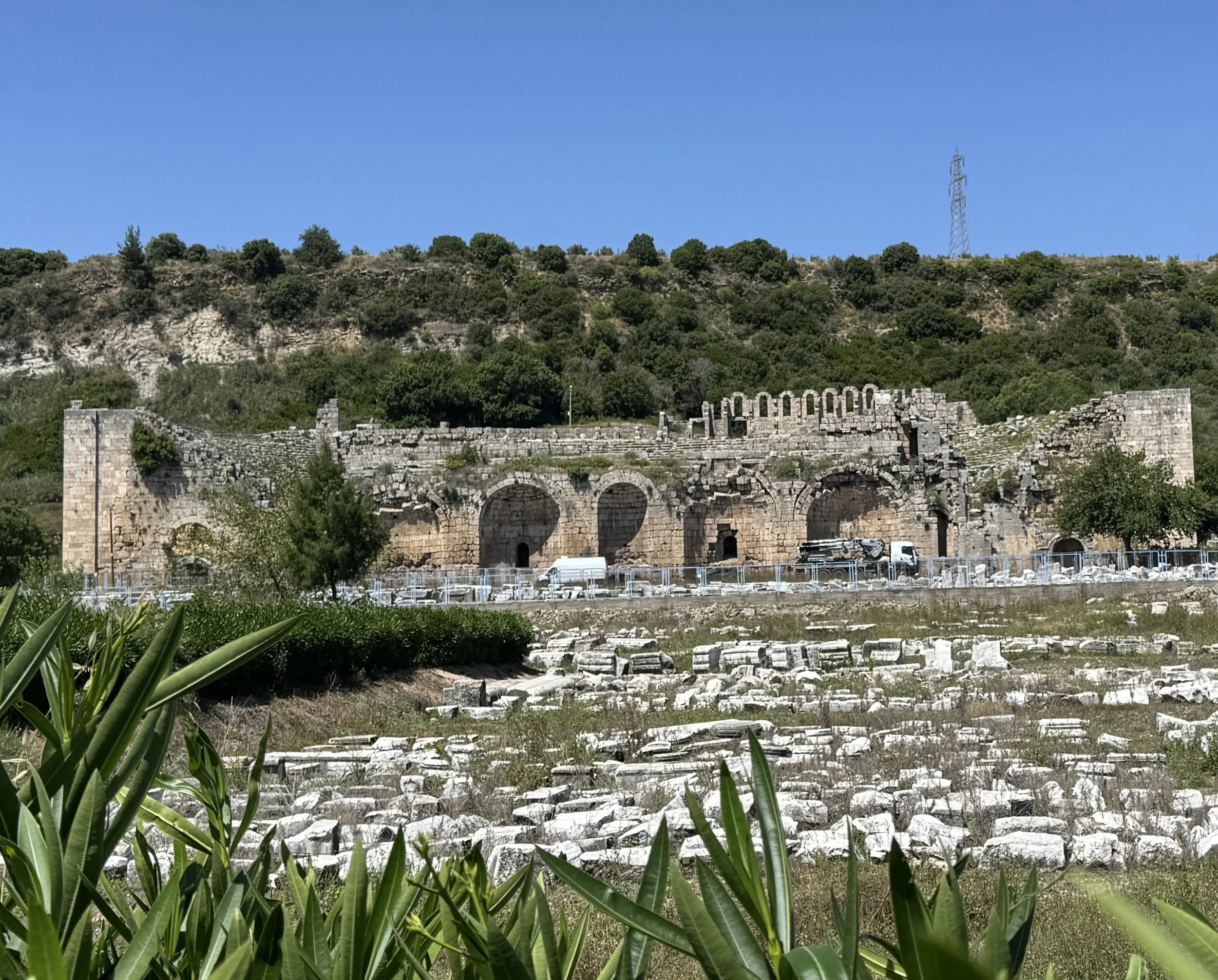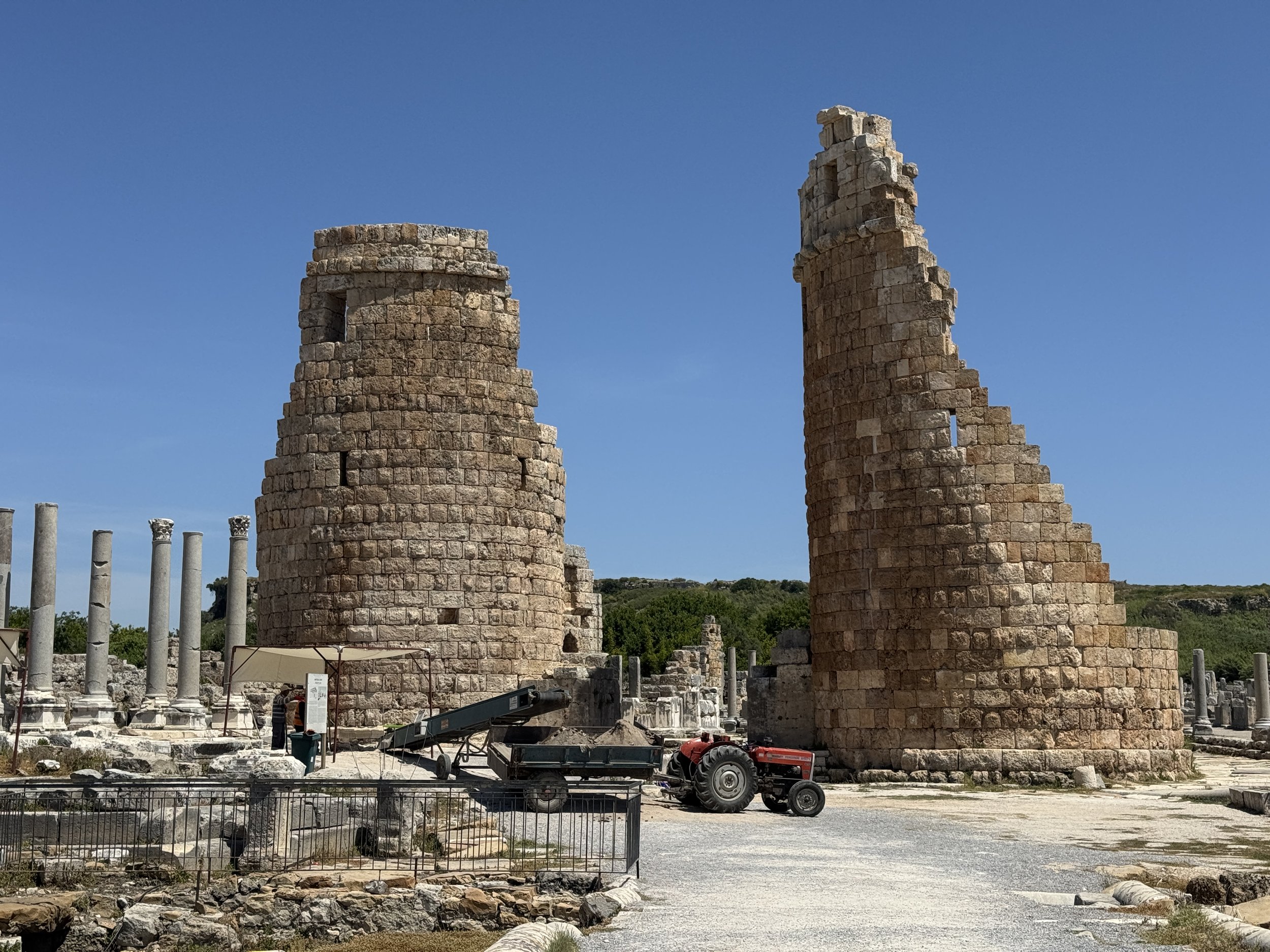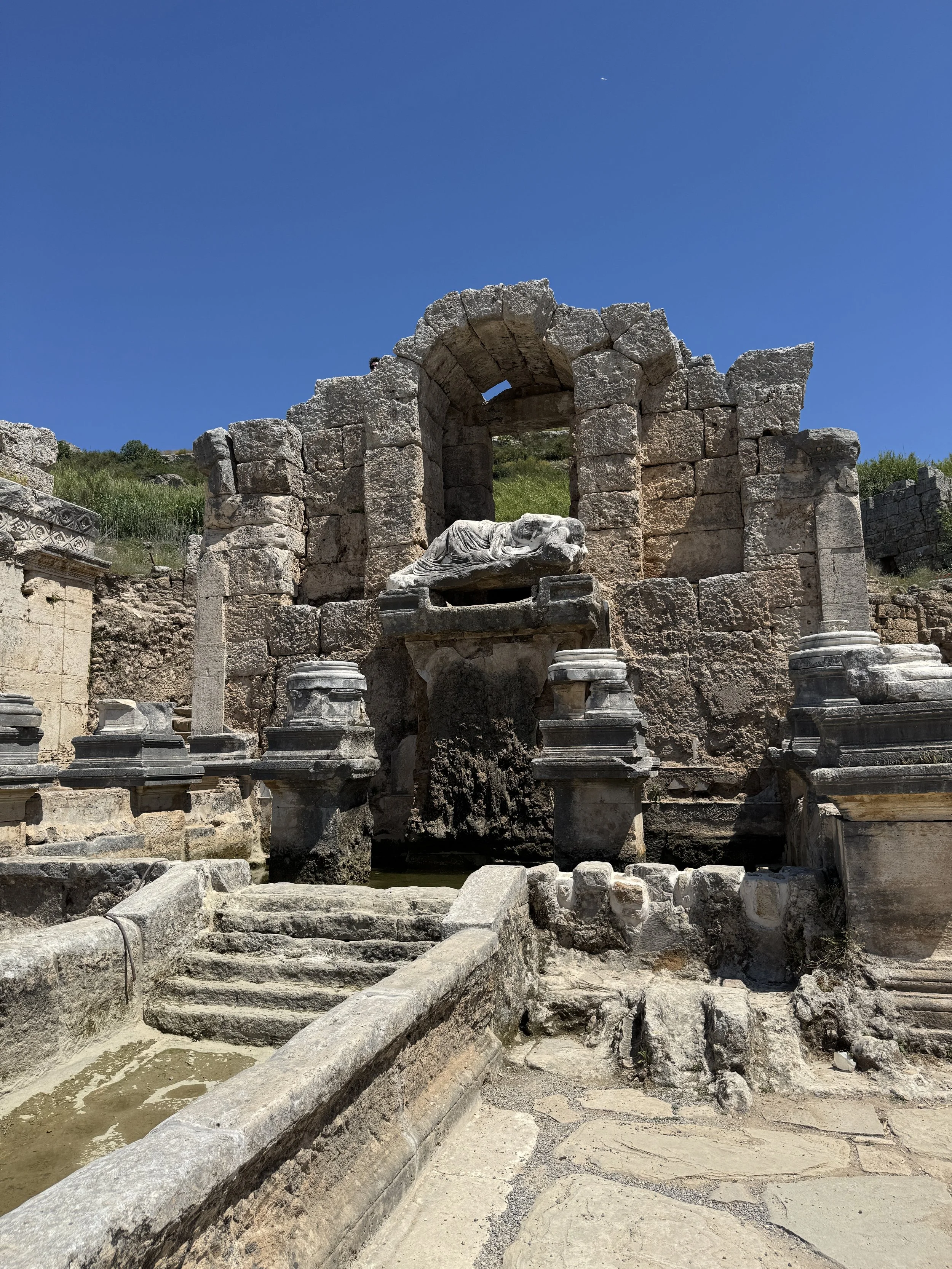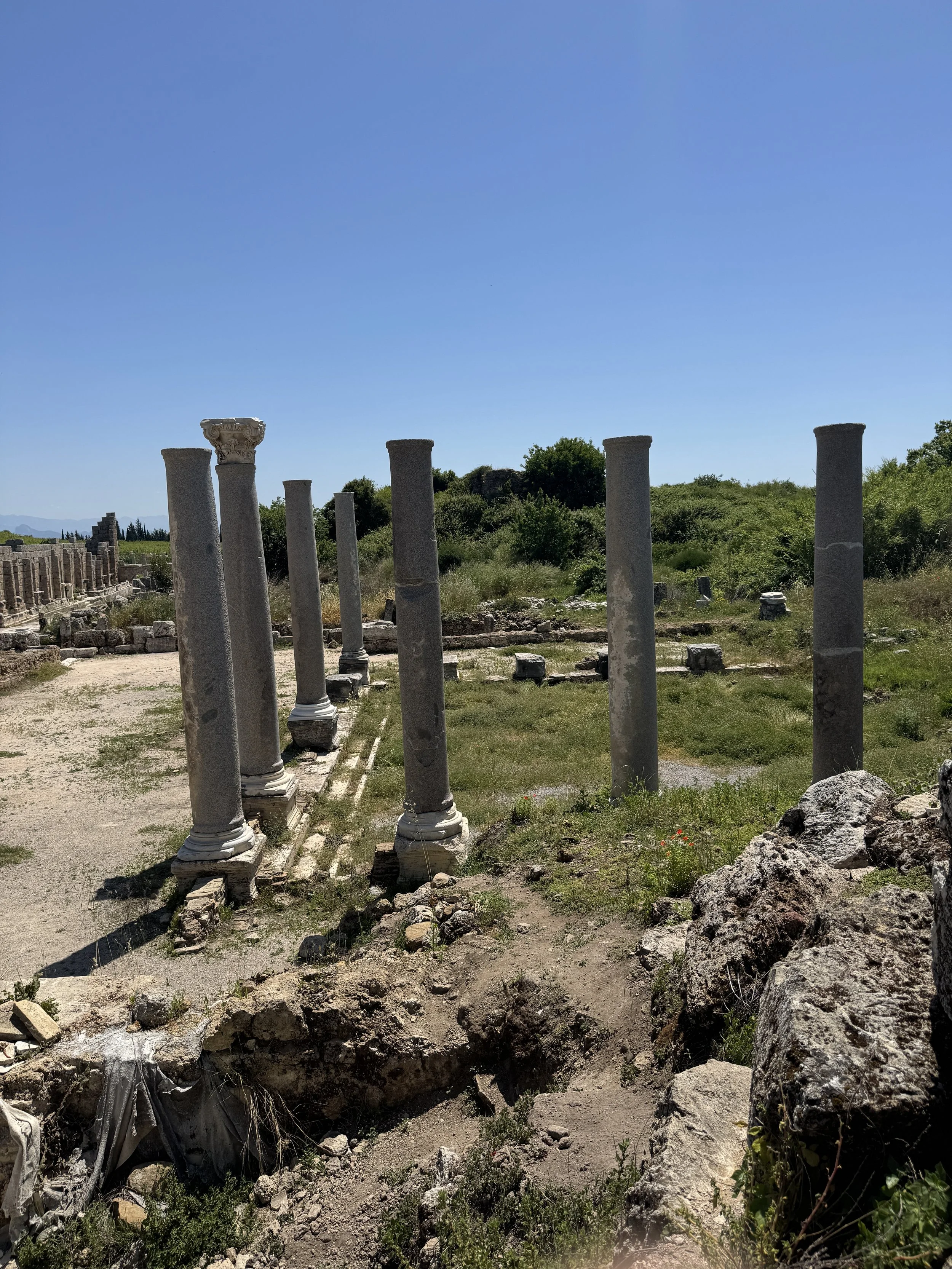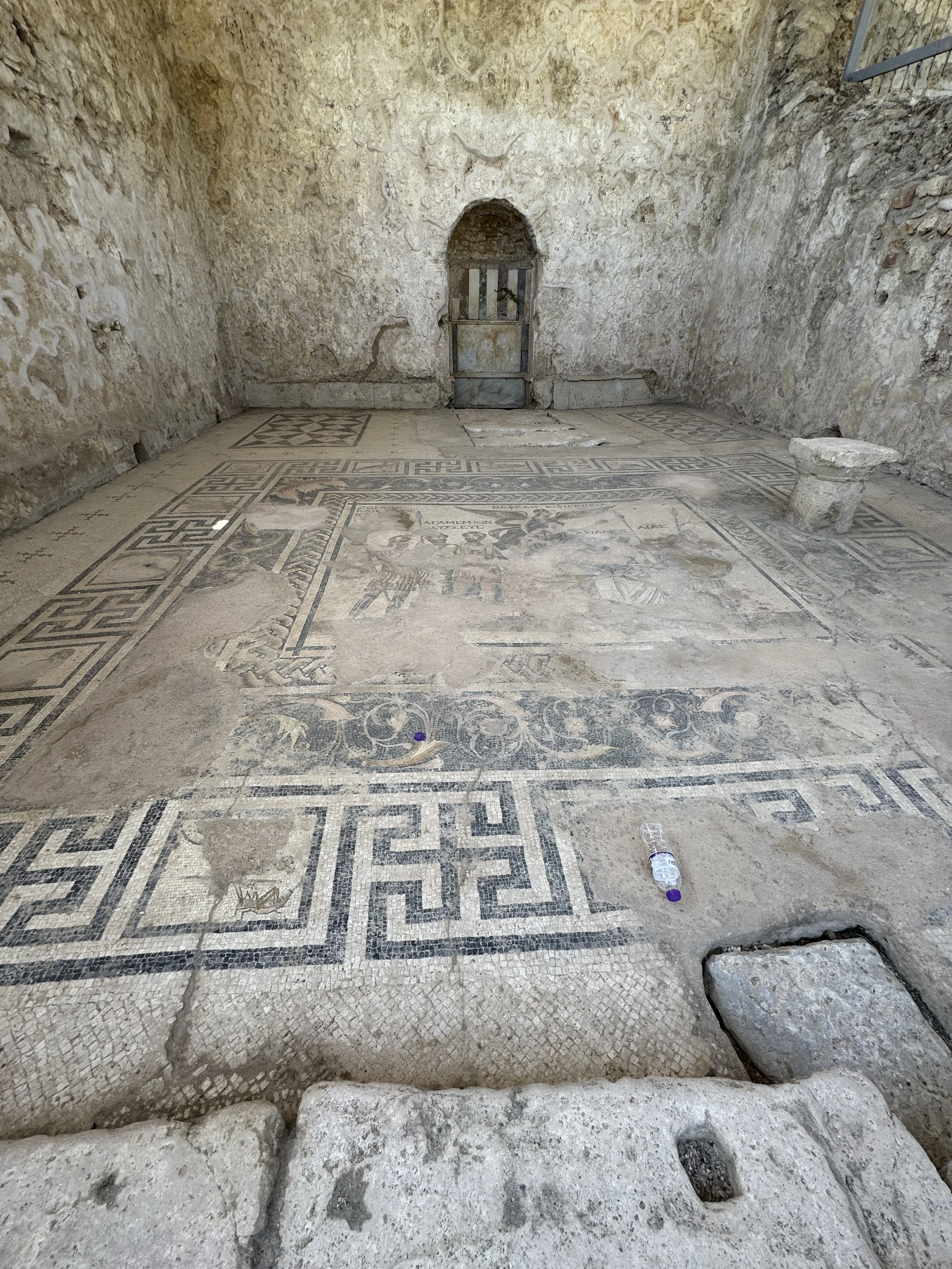Perge’s North West City Gate
“Now Paul and his companions set sail from Paphos and came to Perge in Pamphylia. And John left them and returned to Jerusalem, but they went on from Perge and came to Antioch in Pisida” Acts 13:13-14
When we visited Perge this May, we finally made it to the NW corner of the archeological park to the remains of the north west city gate. This gate led out of the city onto the Via Sebaste, the ancient roman road built by Caesar Augustus starting in 6 BC. Paul and Barnabas would have taken this road all the way to Pisidian Antioch and then to Iconium and Lystra. Sounds simple, but this road climbed through some very steep and perilous terrain in the Taurus Mountains. Archeologists have found evidence sprinkled throughout this entire region of a Jewish presence: Jewish names engraved in a post in nearby Aphrodisias, a menorah carved into a doorpost in a village between Perga and P. Antioch, an inscription on a ruined building along the route that indicates a synagogue, a lamp with a menorah found at Sagalossos (Mark Fairchild, Paul’s Perilous Passage Through Pisidia, November/December 2013 Biblical Archaeology Review).
The northern Perge gate had a triple arch. You can see the bases of the arch structure. When you exit the gate today, modern roads and buildings are just outside and no trace of the Via Sebaste remains in the immediate vicinity. The area outside the gate was the northern necropolis. Many sarcophagi have been recovered from this area during excavations and are on display at the Antalya Archeology Museum.This gate is at western end of the main east - west road through Perge. At the end of the North - South road is the Nymphaeum (fountain) of Hadrian with a statue of the reclining river god Cestrus. Water flowed down from the fountain and into a water channel that ran the length of the city. There were at least 6 nymphaeua at Perge. Across from the NW gate is the Nymphaeum of Caracalla. Built in 217 AD, long after Paul and Barnabas passed through. This nymphaeum wasn’t discovered until excavations in 2014. Also across from the NW gate is the northern bath complex. Unlike the south baths at Perge, the north baths have not been excavated. Across from the bath is a palaestra (sports / exercise yard) that is the earliest roman structure in the city and likely an expansion of its Greek equivalent. Its construction is dated to 41 - 54 AD and would have been a feature along this street, along with many shops, that Paul and Barnabas passed as they ventured into Asia Minor to spread the good new of a risen Savior!
Perge northwest city gate. Exit to the necropolis and the Via Sebaste which Paul and Barnabus would have followed through the Taurus Mountains and on to Pisidian Antioch.

